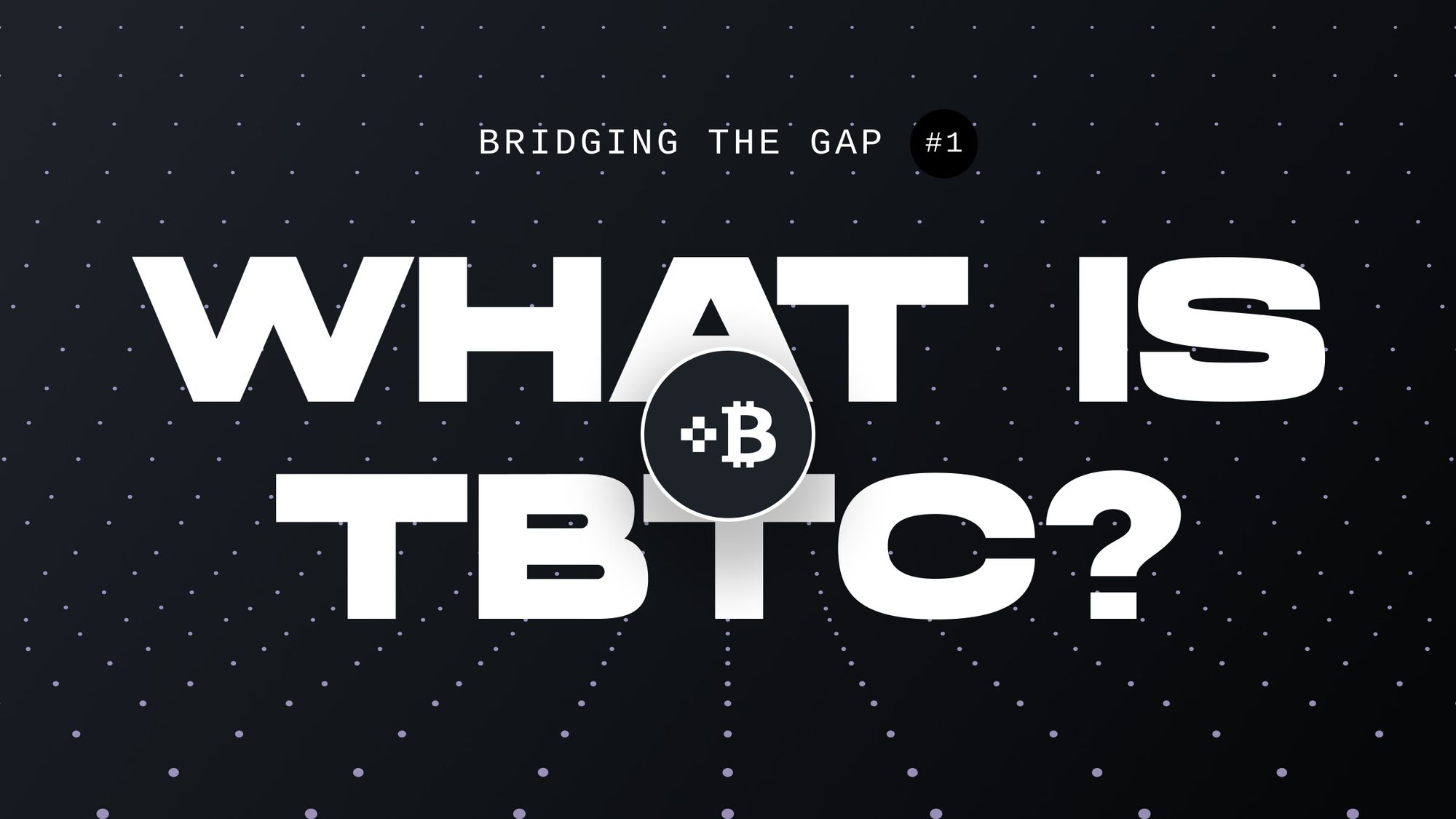Bridging the Gap: The Basics of tBTC

Introducing Bridging the Gap
The second generation of tBTC is an exceptionally secure and truly decentralized bridge between Bitcoin and Ethereum. With it comes permissionless access to the rapidly expanding web3 universe.
Known as tBTC v2, the protocol has been designed to the highest standards of security, privacy – and usability. To support your journey, we are producing a series of accessible guides to technical topics which new users may find helpful.
Throughout the Bridging the Gap series, we will take a closer look at the product architecture behind tBTC v2 and explore how it solves the problems BTC holders have long faced when seeking to make more use of their assets while staying true to Bitcoin’s core values.
In line with Keep Network’s fully decentralized and open source ethos, you can access a repository containing full and detailed documentation via keep-network/ tbtc-v2 on GitHub.
Bridging the Gap: What is tBTC?
tBTC is a truly decentralized, highly secure, and fully open-source Bitcoin-to-Ethereum bridge that enables people to participate safely in Ethereum Decentralized Finance (DeFi) without the need to sell their BTC.
Most DeFi products are built on the Ethereum network, which is increasing in both scale and transaction speeds since the successful Merge event. Most digital assets, however, are held in Bitcoin, which meant users were unable to access the full range of DeFi opportunities without bridging solutions.
Until now, solutions offering to bridge BTC to ETH required users to send their Bitcoin to an intermediary in exchange for Ethereum token representing the original asset. This model creates a point of centralization, requires users to trust a third party, and is vulnerable to censorship – all conditions that contradict Bitcoin’s promise of secure, permissionless decentralization.
Threshold has found a better way to bridge the gap: tBTC v2, an upcoming decentralized bridge that offers safe and seamless crossovers to Ethereum. When tBTC v2 launches, users can deposit and withdraw BTC in a few clicks. And they can use these assets to earn interest in decentralized lending pools, secure crypto-backed loans, generate revenue from liquidity mining – and much more.
How does tBTC work?
A truly decentralized solution, tBTC v2 replaces centralized intermediaries with a randomly selected group of node operators on the Threshold Network. This group of independent operators works together to secure deposited Bitcoin through threshold cryptography. This means tBTC v2 requires a majority threshold agreement before operators perform any action with your Bitcoin.
By rotating the selection of operators, tBTC v2 protects against any malicious individual or group attempting to seize control. This higher level of defense is particularly important given the increasing number of cross-chain bridge hacks, which have led to the loss of hundreds of millions of dollars.
Unlike other solutions on the market, users on tBTC v2 are protected by the power of math alone, and not by fallible hardware or people.
Best of all, tBTC v2 is open and accessible to anyone.
A dive into Deposit and Redemption
Now we have covered the basics, let’s take a deeper dive into two major functions of tBTC v2: Deposit and Redemption.
Deposit:
- Stakers periodically create 51-of-100 threshold-ECDSA-backed wallets to hold frozen Bitcoin assets to maintain account balances.
- Depositors send Bitcoin to the most recently created wallet using either pay-to-script-hash (P2SH) or pay-to-witness-script-hash (P2WSH) which contains hashed information about the depositor’s Ethereum address.
- The depositor reveals their P2(W)SH deposit to the Ethereum chain. The Bridge, always on alert for these sorts of messages, then checks the Bitcoin network to make sure the funds line up.
- If everything checks out, the wallet sweeps funds and updates the Ethereum-side account balances.
Redemption:
- A user with an account balance supplies a Bitcoin address.
- The system decreases their account balance and releases the equivalent amount of Bitcoin to the user from the redeeming Bitcoin wallet.
- The maximum redemption size is capped by the size of the largest wallet, and any redemption bigger than that will need to be split into multiple redemptions.
That’s it for the first installment but please stay tuned. In this series, we will also take a look at:
- Bridge, Bank, and Vault Separation
- How tBTC wallets work
- How tokenizing tBTC works
Meanwhile, learn more in the Threshold Discord and on Github.

